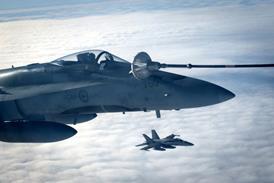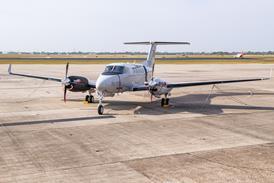Peter Bermingham started on the shop floor at British Aerospace in Filton and has played key roles in the site's transition to the Airbus organisation and, now, to GKN Aerospace, where he is head of assembly
What's your career path been at Airbus and GKN?
I started on the shop floor at Filton as a skilled fitter in 1990. Two years later there was a reorganisation and I became a process team leader, leading 12 people. In the mid-1990s I was part of the finance team involved in reconciling aerostructure sites at Filton, Chadderton and Prestwick. I then held roles in projects and procurement programmes beforemoving into manufacturing as head of assembly, Airbus Filton, with responsibility across all programmes from the A320 to the A380.
I moved into this role to become a core part of the new GKN Aerospace operation when the sale was completed. I was aware that GKN was a very different style of operation to Airbus, which would bring new challenges anddevelopment opportunities. I very much wanted to be part of that change.
How did you get started?
When I left school I completed a five-year apprenticeship with a small company in Ireland. This was a highly skilled group of "old school" craftsmen who instilled high standards in me.
 |
|---|
© GKN |
Did you always want to work in aviation?
No, I fell into it. Having completed my apprenticeship I knew I wanted to work for a large manufacturer with a diverse operation -and that I wanted to move to the UK. I was offered a job at what was then British Aerospace and have been here since. I have never had a chance to be bored - and that is a great thing for any of us to be able to say of our job!
What's been your biggest success?
Getting a degree in business over six years attending nightschool atthe University of the West of England whileworking full time and looking after a young family!
Biggest mistake?
I know it's a cliche,but I don't have one. I make all my decisions on the available information I have at the time and do the best I can -and then I don't tend to look back and waste time with regrets.Everything I have done has taught me something and brought me to where I am now, which is a great place to be.
Describe a typical day?
I have a standard approach to every day as it is vital you keep pace with the drumbeat of production in what is an aggressive manufacturing environment.By eighteach morning I am fully aware of everything that has gone on in the last 24 hours and I spend the day addressing and resolving issues and building that experience into our forward plans, looking at our workload six,nine, 12 months ahead.
What's your biggest challenge?
Motivating people. We all respond to different motivators and understanding and adapting my approach to get the best from every member of the team means every day is different and I can never be complacent.
Do you have any advice for young people getting into manufacturing today?
Two things: firstly, don't come into it unless you believe you have a genuine interest.It's a fascinating career, tough and challenging, but very rewarding if you are interested and prepared to get involved, adapt and grow.
It is not aneasy ride for peoplewho don't want to work to make acontribution.
Secondly, and looking forward, the focus is going to be on the increasing incorporation and embedding of technology into the manufacturing process, to make a difference in airframe quality, performance, manufacturing time and cost.If you have ability in that direction this would be an excellent time to enter aviation.
Source: Flight International























